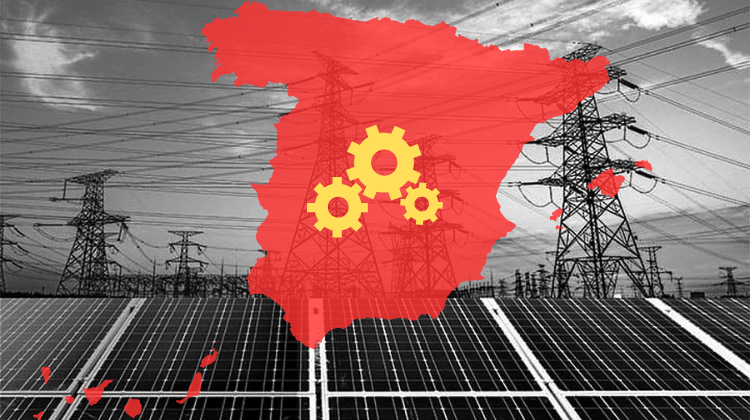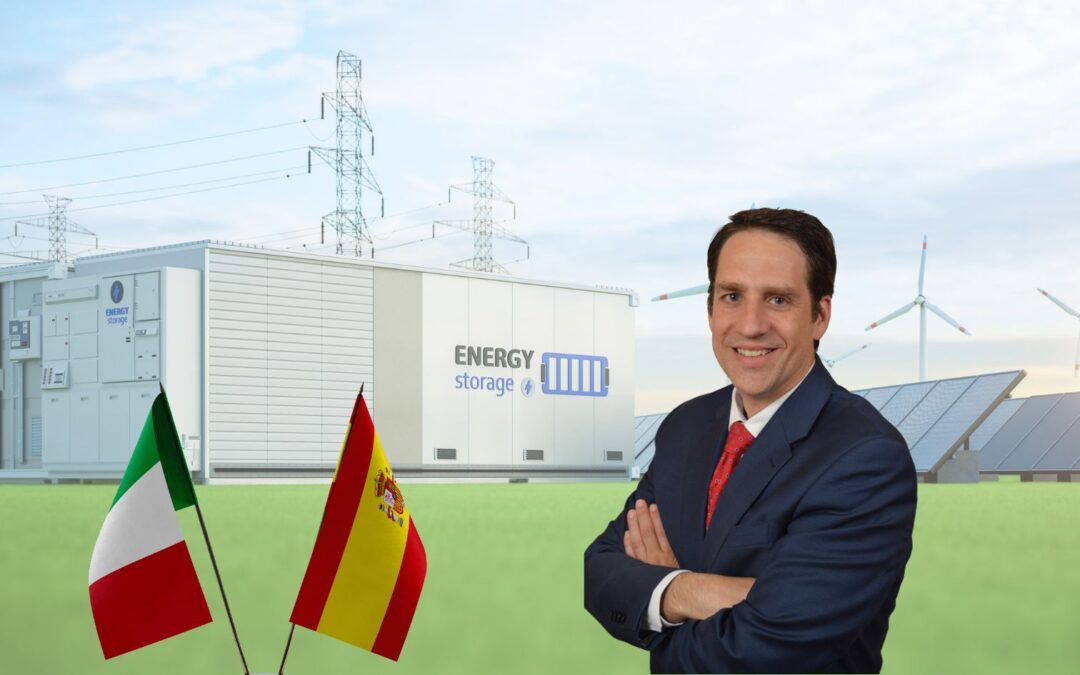The national proposal steers investment towards firm demand: €13.59 billion through 2030 to add 27.7 GW of new transmission capacity and 5.3 GW in distribution—roughly 85% of 2024 peak demand—with a functional split of 13.1 GW for green hydrogen, 9 GW for industry, 3.8 GW for data centres, 1.8 GW for housing, 560 MW for rail and 1.2 GW for ports.
In parallel, the Government is finalising a royal decree that tightens execution control for network investments and allows anticipatory investments in areas with insufficient grid, an instrument designed to catalyse anchor projects where demand has yet to materialise.
According to Alejandro Labanda, Director of Ecological Transition at beBartlet, “the Ministry wants to close a ‘definitive picture’ of network actions and investments before publishing the draft, which could be released in October,” in dialogue with Strategic Energy Europe.
All signs point to the timetable being met after trilateral meetings between MITECO, the regions and Red Eléctrica.
“It has been a participatory process, with broad public consultations managed by Red Eléctrica and, despite a difficult year due to national emergencies, timelines and dialogues are being kept,” Labanda explains.
Across the regional map, many territories endorse the thrust of the plan while asking for refinements. Andalusia considers that the proposal recognises almost all of its requests and opens the door to large hydrogen and renewable fuels projects, port electrification and new rail corridors. In the meeting, Jorge Paradela, Regional Minister for Industry, Energy and Mines, asked to increase grid density—currently about 40% below the national average—and to prioritise the Baza–Manzanares reinforcement to knit together rural areas.
The Region of Murcia hails a four‑fold increase in investment, with reinforcements towards Escombreras (hydrogen valley), the north‑west/Caravaca area and the metropolitan grid around the capital, which would close the so‑called “energy desert”. The regional authority stressed the priority of consolidating Escombreras as a hydrogen valley and strengthening the north‑west.
The Community of Madrid concentrates 160 bays and 47 substations to improve internal flows, supply quality and to serve new housing and rail. Carlos Novillo, Regional Minister for the Environment, Agriculture and Interior, called for prioritising new housing developments and rail electrification.
In the Balearic Islands (meeting with Alejandro Sáenz de San Pedro i García, Minister for Enterprise, the Self‑Employed and Energy), the second Peninsula–Mallorca cable and the second Mallorca–Menorca cable, together with port electrification, will bolster security of supply and renewable penetration; and in the Canary Islands the regional government underlined the need for transmission reinforcements to stabilise insular systems, anchor new industry and diversify the economy.
Other industrial hubs welcome the step change but request more power. The Basque Country (meeting with Mikel Jauregi, Regional Minister for Industry, Energy Transition and Sustainability) estimates an increase of around 40% in available capacity over five years—with four new substations and reinforcement of around twenty—to decarbonise energy‑intensive industry and electrify the Port of Bilbao; the Basque Government aims for a further 50% (≈6 GW) and will push for it in the public hearing.
In Cantabria (meeting with Eduardo Arasti, Regional Minister for Industry, Employment, Innovation and Trade) the grid will be re‑meshed with a new Besaya substation to decarbonise the Solvay complex, alongside hydrogen and storage (pumped hydro and batteries) and Port of Santander electrification.
For Asturias, Borja Sánchez, Regional Minister for Science, Enterprise, Training and Employment, secured inclusion of the Gijón–Oviedo–Avilés central ring and an additional 2.5 GW of capacity—a lever to consolidate industry and enable hydrogen projects.
In Castile and León, the plan foresees over 1,000 km of uprated lines, 130 bays and 42 substations, focusing on just transition areas and large electro‑intensive demand. Carlos Fernández Carriedo and Juan Carlos Suárez‑Quiñones insisted that energy should serve local development as well as export surpluses.
The bloc exerting the greatest pressure on the final figure is seeking power to attract new industry. Aragón, with María del Mar Vaquero, First Vice‑President and Regional Minister for Economy, Employment and Industry, expressed disappointment, arguing the plan “does not address the technology sector”, and announced objections, although the Ministry recalled that the proposal multiplies peak‑demand coverage sevenfold and uprates lines for batteries and H₂.
Navarra (meeting with Mikel Irujo, Regional Minister for Industry and for Ecological and Digital Transition) welcomes renewable evacuation capacity (≈2,900 MW) but warns of insufficient capacity for large industrial projects; the issue will be tabled during the hearing.
Galicia, through María Jesús Lorenzana, Regional Minister for Economy and Industry, values reinforcements in A Coruña, Pontevedra and Ourense, but warns that, without specific action, “Lugo is left off the industrial map”.
Castile‑La Mancha is tripling investment, adding 14 new substations and raising investment limits by 62%, yet requests 6,000 MW more to secure industrial hubs and H₂, with reinforcements around Puertollano, Henares, Noblejas and Manzanares.
La Rioja (meeting with Belinda León, Regional Minister for Economy, Innovation, Enterprise and the Self‑Employed) calls for greater distribution capillarity (reinforcements in Logroño, Quel and Haro) and power across the entire territory, including depopulated areas, citing the April blackout as a reminder of the fragility of certain sections.
In the Valencian Community (meeting with Manuel Argüelles, Director‑General for Energy and Mines; with follow‑up by Marián Cano, Regional Minister for Innovation, Industry, Trade and Tourism) there is clear alignment with MITECO and a focus on expanding distribution capacity, reinforcing substations and creating “electric motorways” to support the ceramics sector and adjacent industry; the region also asks for quick, low‑budget actions with immediate impact.
Catalonia concentrates reinforcements on the Tarragona chemicals hub (H₂ and renewable fuels), desalination, ports and rail, dedicating around half of new distribution capacity to residential developments to ease urban bottlenecks; storage—including pumped hydro—emerges as a critical tool.
In Extremadura (meeting with Mercedes Morán Álvarez, Regional Minister for Agriculture, Livestock and Sustainable Development), additional capacity more than doubles peak demand (≈1.6 GW), with 86 bays and 19 substations to serve automotive, synthetic fuels and storage; the regional government described the fit as “very productive”.
The test of the draft’s robustness will lie in how politics translates into engineering detail: territorial allocation criteria that weight firm demand and project maturity; storage design (MW/MWh and timeline) to limit curtailment and provide operational flexibility; concrete chapters for ports and rail; and an anticipatory‑investment regime with penalties for under‑execution that works in practice and transparently measures the “demand pull” effect.
Within this framework, Labanda concludes that “rather than being a reference in itself, Spain has listened and applied international best practice to adapt the grid‑infrastructure framework to today’s context: to attract demand, move quickly and target actions to concrete projects with firm demand.”
The planning shifts from a logic of merely integrating generation to one of electrifying demand with territorial criteria, a change that requires prioritising nodes with anchor projects, realistic timelines and clear socio‑economic externalities.
The public hearing will be the arena where Aragón, Navarra and Galicia seek to adjust the allocation; the October draft will have to show that the 2030 grid arrives on time for hydrogen, new industry and digitalisation, while keeping bills under control for households and firms.




























